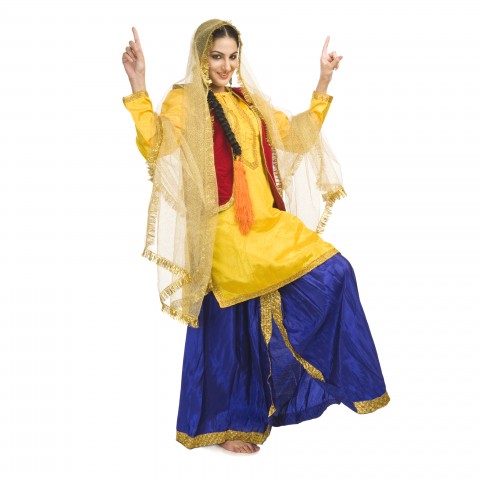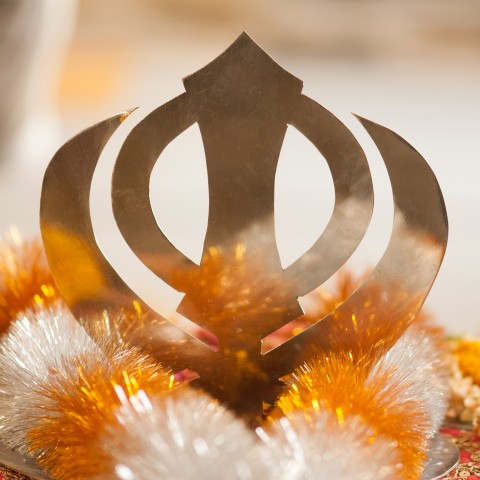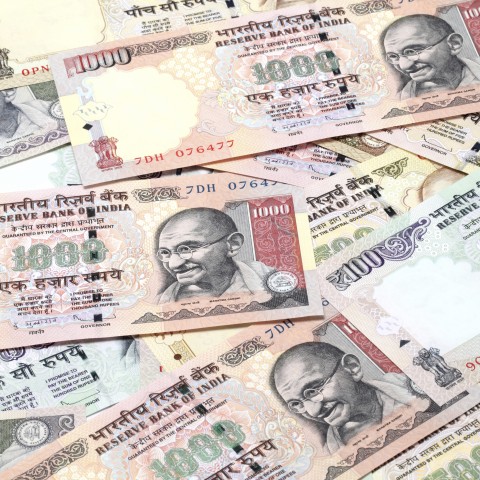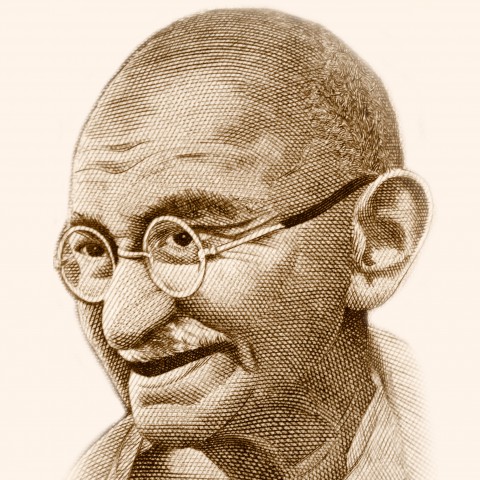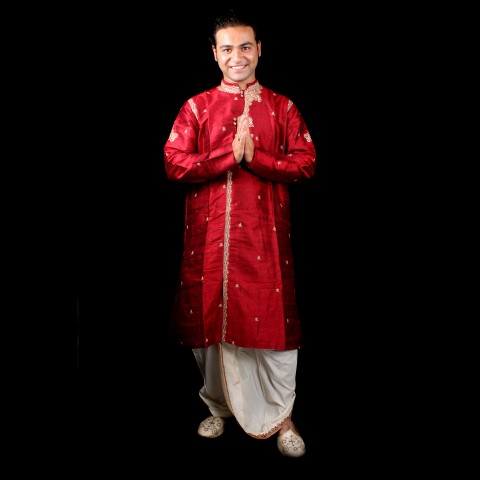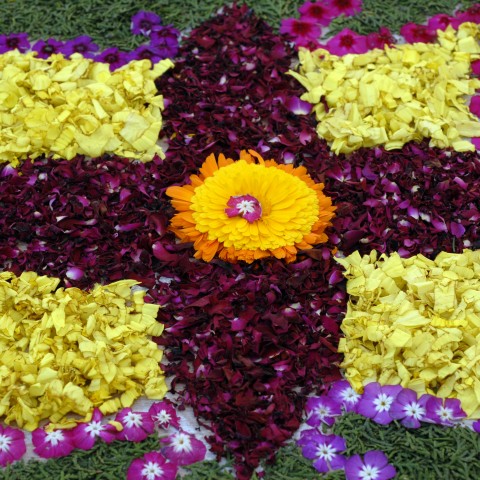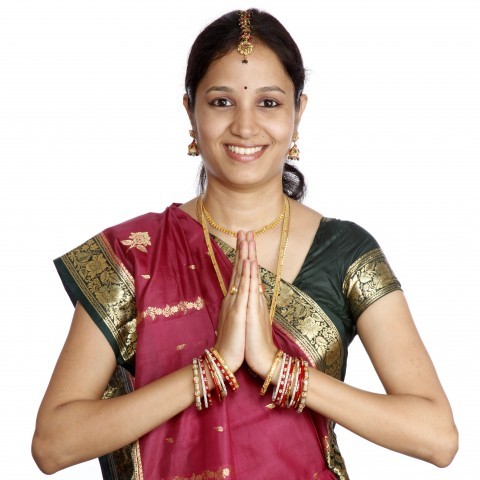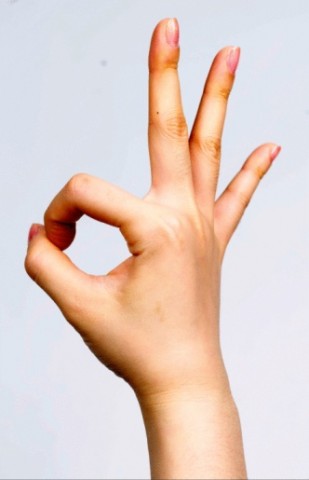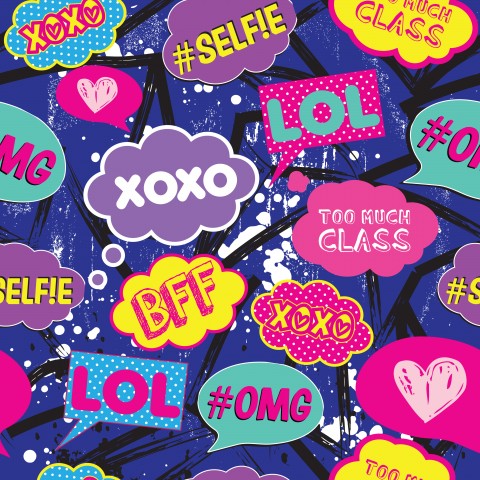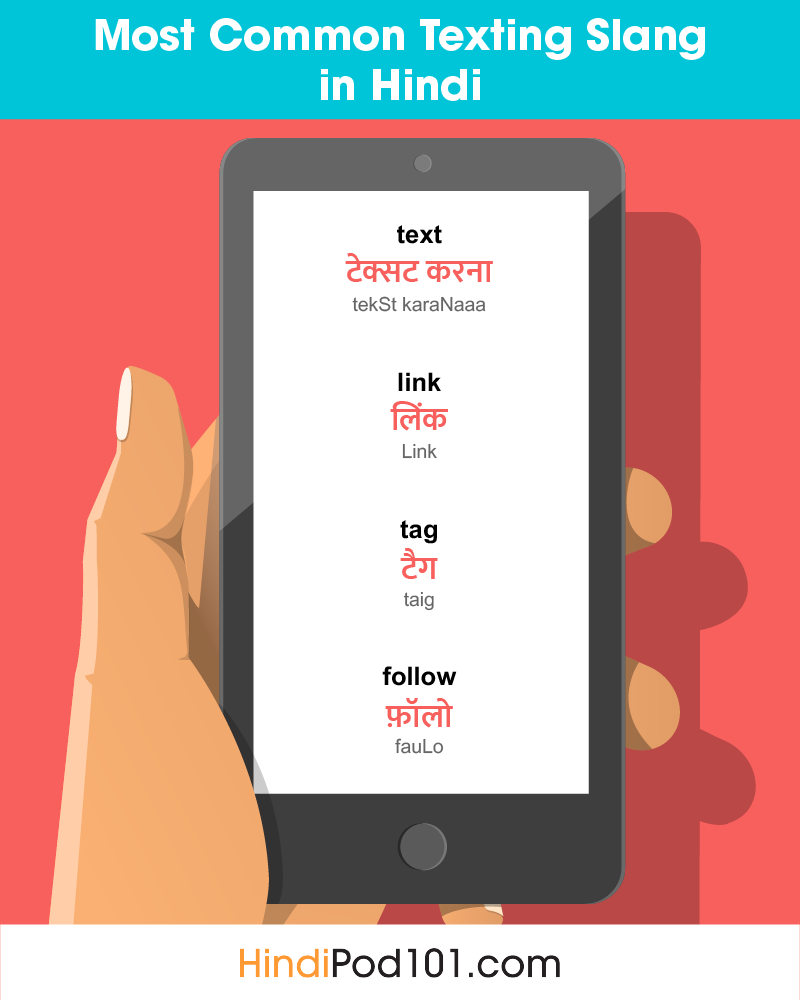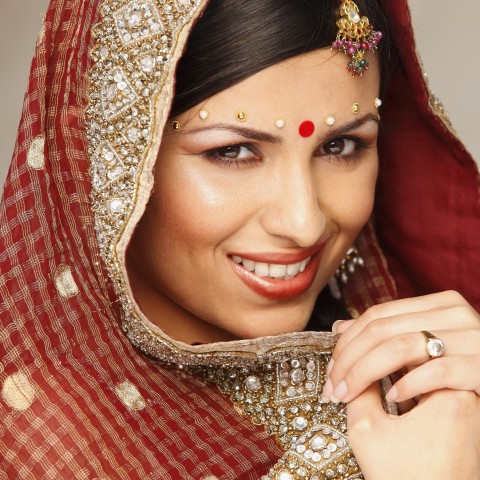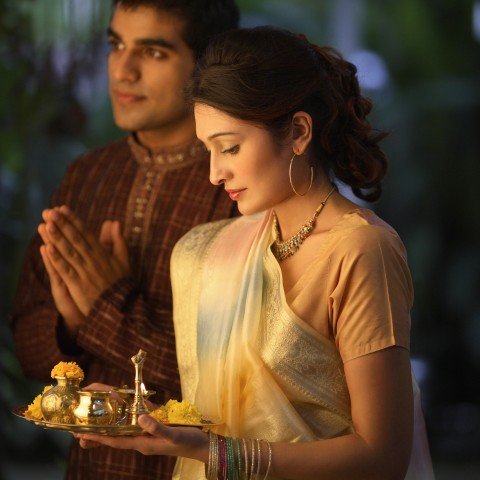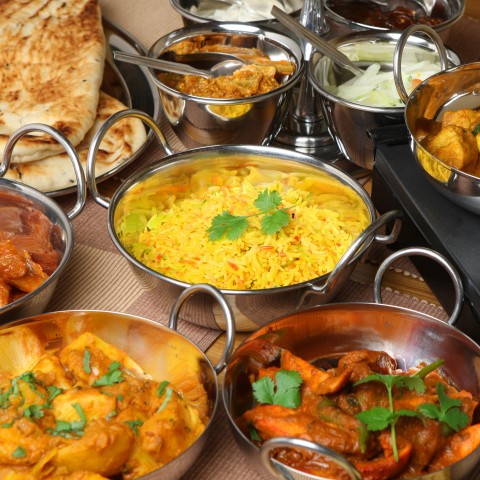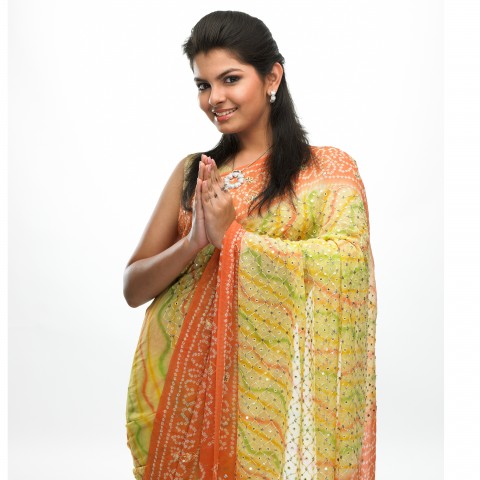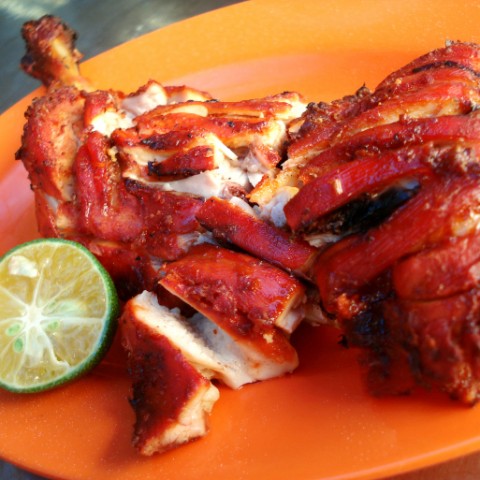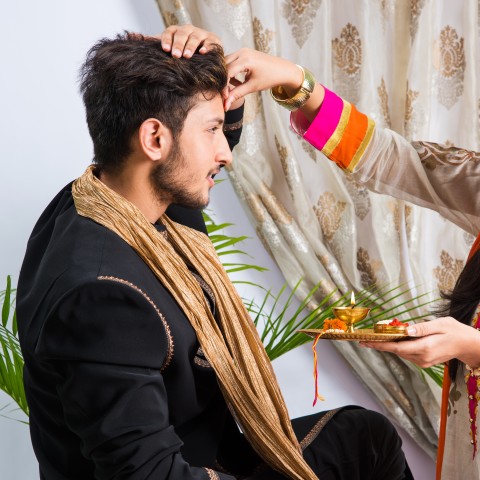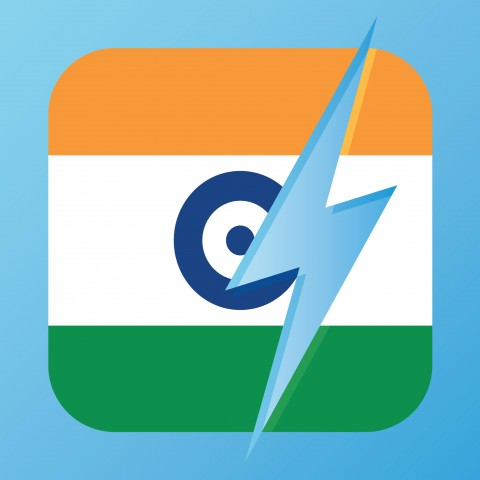
You’re learning to speak Hindi, and it’s going well. Your confidence is growing! So much so that you feel ready to share your experiences on social media—in Hindi.
At Learn Hindi, we make this easy for you to get it right the first time. Post like a boss with these phrases and guidelines, and get to practice your Hindi in the process.

1. Talking about Your Restaurant Visit in Hindi
Eating out is fun, and often an experience you’d like to share. Take a pic, and start a conversation on social media in Hindi. Your friend will be amazed by your language skills…and perhaps your taste in restaurants!
Aman eats at a restaurant with his friends, posts an image of the group, and leaves this comment:

POST
Let’s break down Aman’s post.
सस्ते में झकास खाना जिगरी दोस्तों के साथ! (SaSTe men jhakaaS khaaNaa jigarii DoSTon ke SaaTH!)
“Fabulous food at a low price with beloved friends!”
1- सस्ते में झकास खाना (SaSTe mein jhakaaS khaaNaa)
First is an expression meaning “Fabulous food at a low price.”
“SaSTe mein” means ‘at (a) low price’. This expression is used to emphasize that, although the item is good, it was purchased at a oood price. “jhakaaS” is a slang word, originally heard in Mumbai, that means something like “fantastic” or “fabulous”.
2- जिगरी दोस्तों के साथ (jigarii DoSTon ke SaaTH)
Then comes the phrase – “with beloved friends.”
“jigarii” comes from the root word “jigar”, which means ‘heart’. So “jigarii DoST” refers to friends who are so close that they’re like family – the closest of close friends.
COMMENTS
In response, Aman’s friends leave some comments.
1- मज़े करो। (maze karo.)
His neighbor, Sneha, uses an expression meaning – “Enjoy!”
This is an appropriate, short response to any announcement of an activity.
2- वाह! मुझे भी चाहिए! (vaah! mujhe bhii caahiye.)
His girlfriend’s high school friend, Shabana, uses an expression meaning – “Wow! I want some too!”
Use this expression to indicate you think the food looks delicious.
3- कभी आओ यहाँ। (kabhii aao yahaan.)
His girlfriend, Mira, uses an expression meaning – “Come here some time.”
Use this expression if you wish to invite the poster to come over.
4- सब बहुत अच्छे लग रहे हैं। (Sab bahuT acche Lag rahe hain.)
His college friend, Gaurav, uses an expression meaning – “Everyone looks great.”
Use this expression to compliment someone.
VOCABULARY
Find below the key vocabulary for this lesson:
सस्ता (SaSTaa): “cheap, inexpensive”
झकास (jhakaaS): “fantastic, fabulous”
खाना (khaaNaa): “food”
जिगरी (jigarii): “close, beloved”
दोस्त (DoST): “friend”
साथ (SaaTH): “with, together, along with”
मज़ा (mazaa): “fun”
चाहना (caahaNaa): “to want”
So, let’s practice a bit. If a friend posted something about having dinner with friends, which phrase would you use?
Now go visit a Hindi restaurant, and wow the staff with your language skills!
2. Post about Your Mall Visit in Hindi
Another super topic for social media is shopping—everybody does it, most everybody loves it, and your friends on social media are probably curious about your shopping sprees! Share these Hindi phrases in posts when you visit a mall.
Mira goes shopping with her sister, posts an image of the two of them together, and leaves this comment:

POST
Let’s break down Mira’s post.
बहन के साथ बिंदास शॉपिंग करने का मज़ा ही कुछ और है! (bahaN ke SaaTH biNDaaS sauping karaNe kaa mazaa hii kuch aur hai!)
“Shopping freely with my sister is another level of fun!”
1- बहन के साथ बिंदास शॉपिंग (bahaN ke SaaTH biNDaaS sauping )
First is an expression meaning “Shopping freely with my sister.”
“bahaN ke SaaTH sauping karaNaa” means ‘to shop with your sister’ or ‘shopping with your sister’, and “biNDaaS” is a colloquial slang word that means “completely freely”. “biNDaaS sauping karaNaa” means something like ‘to shop one’s heart out’.
2- करने का मज़ा ही कुछ और है (karaNe kaa mazaa hii kuch aur hai)
Then comes the phrase – “is another level of fun.”
“karaNe kaa mazaa” means ‘the fun of doing’. “X kaa mazaa hii kuch aur hai” is a common expression used to describe something that is more satisfying or fun than most activities. “kuch aur hai” literally means ‘is something else’, which is similar to ‘next level’ or ‘ a whole other level’ in colloquial English.
COMMENTS
In response, Mira’s friends leave some comments.
1- बिल्कुल ठीक! (biLkuL thiik!)
Her high school friend, Shabana, uses an expression meaning – “Very true!”
Use this expression to accept someone else’s point of view.
2- बहनों का प्यार! (bahaNon kaa pyaar!)
Her neighbor, Sneha, uses an expression meaning – “Sisterly love!”
Use this expression when you are feeling warmhearted
3- मेरे लिए क्या लिया? (mere Liye kyaa Liyaa?)
Her boyfriend, Aman, uses an expression meaning – “What did you get me?”
Use this expression to be humorous and to tease the poster.
4- सरप्राइज़ है। (Sarapraaiz hai.)
Herself, Mira, uses an expression meaning – “It’s a surprise.”
Use this expression to show your affection and tease the previous poster back.
VOCABULARY
Find below the key vocabulary for this lesson:
बहन (bahaN): “sister”
बिंदास (biNDaaS): “freely, unreservedly, having swagger”
और (aur): “else, other, and”
बिल्कुल (biLkuL): “totally, completely, absolutely, very”
ठीक (thiik): “correct, true, fine, okay”
प्यार (pyaar): “love”
लेना (LeNaa): “to take”
So, if a friend posted something about going shopping, which phrase would you use?
3. Talking about a Sport Day in Hindi
Sports events, whether you’re the spectator or the sports person, offer fantastic opportunity for great social media posts. Learn some handy phrases and vocabulary to start a sport-on-the-beach conversation in Hindi.
Aman enjoys a game of beach cricket, posts an image of the event, and leaves this comment:

POST
Let’s break down Aman’s post.
आज की ताज़ा खबर – बीच क्रिकेट में मैं झंडे गाड़ के आया हूँ! (aaj kii Taazaa khabar – biic kriket men main jhaNde gaad ke aayaa huun.)
“Today’s (fresh) news – I killed it in beach cricket!”
1- आज की ताज़ा ख़बर (aaj kii Taazaa khabar)
First is an expression meaning “Today’s news.”
“aaj kii Taazaa khabar” is a phrase people use to mimic newsreaders when they announce information that’s “hot off the fire”. “Taazaa khabar” means ‘fresh/recent news’.
2- बीच क्रिकेट में मैं झंडे गाड़ के आया हूँ (biic kriket men main jhaNde gaad ke aayaa huun)
Then comes the phrase – “I killed it in beach cricket.”
“jhaNde gaadaNaa” is a colloquial way of describing how outstanding you are in something, and means something similar to ‘destroying your competition’. Literally “jhaNdaa gaadaNaa” means ‘planting a flag’, which draws on the idea of planting your flag after conquering a territory. This phrase can refer to being impressive in any activity.
COMMENTS
In response, Aman’s friends leave some comments.
1- क्या बात है! (kyaa baaT hai!)
His neighbor, Sneha, uses an expression meaning – “Well done!”
Use this expression to compliment someone.
2- बीच में खेलना आसान है? (biic men kheLaNa aaSaaN hai?)
His college friend, Gaurav, uses an expression meaning – “Is it easy to play on the beach?”
Use this expression to show your interest in the topic, and to make conversation.
3- हाँ ठीक ही है। (haan thiik hii hai.)
Himself, Aman, uses an expression meaning – “Yeah, it’s fine”
Use this expression as a response to the previous poster’s question, and to be friendly
4- बहुत मज़ा आया! (bahuT mazaa aayaa!)
His high school friend, Seema, uses an expression meaning – “That was fun!”
Use this expression to show your joy.
VOCABULARY
Find below the key vocabulary for this lesson:
आज (aaj): “today”
ताज़ा (Taazaa): “fresh”
ख़बर (khabar): “news”
झंडा (jhaNdaa): “flag”
गाड़ना (gaadaNaa): “hoist, install, implant”
खेलना (kheLaNaa): “to play”
आसान (aaSaaN): “easy”
Which phrase would you use if a friend posted something about sports?
But sport is not the only thing you can play! Play some music, and share it on social media.
4. Share a Song on Social Media in Hindi
Music is the language of the soul, they say. So, don’t hold back—share what touches your soul with your friends!
Mira likes a song, posts an image of the artist, and leaves this comment:

POST
Let’s break down Mira’s post.
गाना ज़बरदस्त है! सुनकर ख़ुद पैर थिरकने लगते हैं! (gaaNaa zabaraDaST hai! SuNakar khuD pair THirakaNe LagaTe hain.)
“Excellent song! Your feet start to tap on their own!”
1- गाना ज़बरदस्त है! (gaaNaa zabaraDaST hai)
First is an expression meaning “Excellent song!”
“zabaraDaST” is a colloquial expression that describes something as “rocking”, “fantastic” or “awesome”. The connotation behind this expression implies that the object is high energy.
2- सुनकर ख़ुद पैर थिरकने लगते हैं (SuNakar khuD pair THirakaNe LagaTe hain)
Then comes the phrase – “Legs start to tap on their own!.”
“khuD” means ‘self’. “THirakaNaa” means ‘to tap’ or ‘to dance’ but only refers to a person’s feet, not the entire person. So “pair khuD THirakaNe LagaNaa” means ‘feet start to move on their own’. It’s a way of saying that the music is so exciting that you couldn’t keep yourself from dancing to it.
COMMENTS
In response, Mira’s friends leave some comments.
1- मुझे भी बहुत पसंद है (mujhe bhii bahuT paSaND hai)
Her high school friend, Shabana, uses an expression meaning – “I like this a lot too”.
Use this expression to show your agreement.
2- डांस पार्टी! (daaNS paartii!)
Her neighbor, Sneha, uses an expression meaning – “Dance party!”
Use this expression if you are feeling cheerful.
3- अरे वाह! गायक कौन है? (are vaah! gaayak kauN hai?)
Her boyfriend’s high school friend, Seema, uses an expression meaning – “Oh wow! Who’s the singer?”
Use this expression to show your interest.
4- बहुत अच्छा! (bahuT acchaa!)
Her college friend, Gaurav, uses an expression meaning – “Very good!”
Use this expression to show your responsiveness, meaning you want to make conversation by agreeing with the poster.
VOCABULARY
Find below the key vocabulary for this lesson:
गाना (gaaNaa): “song”
ज़बरदस्त (zabaraDaST): “fantastic, awesome, excellent”
सुनना (SuNaNaa): “to hear, to listen”
पैर (pair): “leg, feet”
थिरकना (THirakaNaa): “to tap, to jive, to dance”
पसंद (paSaND): “like, liking, preference”
गायक (gaayak): “singer”
Which song would you share? And what would you say to a friend who posted something about sharing music or videos?
Now you know how to start a conversation about a song or a video on social media!
5. Hindi Social Media Comments about a Concert
Still on the theme of music—visiting live concerts and shows just have to be shared with your friends. Here are some handy phrases and vocab to wow your followers in Hindi!
Aman, Mira and a friend go to a live concert, posts an image of the event, and leaves this comment:

POST
Let’s break down Aman’s post.
मस्त कॉन्सर्ट – बीवी और कबाब में हड्डी के साथ, बड़ा मज़ा आया। (maST kauNSart – biivii aur kabaab men haddii ke SaaTH, badaa mazaa aayaa.)
“Awesome concert – had a lot of fun with the girlfriend and the third wheel.”
1- मस्त कॉन्सर्ट (maST kauNSart)
First is an expression meaning “Fantastic concert.”
“maST” was originally a spiritual term that referred to a state of intoxication through devotion. Now it’s commonly used as a colloquial term that means ‘fun’, ‘free’, ‘immensely enjoyable’, ‘carefree fun’ and ‘fantastic’.
2- बीवी और कबाब में हड्डी के साथ बड़ा मज़ा आया (biivii aur kabaab mein hadii ke SaaTH badaa mazaa aayaa)
Then comes the phrase – “- had a lot of fun with the girlfriend and the third wheel.”
“kabaab men haddii” is a specific colloquial phrase that refers to a third person being in the way of a couple’s love or flirtation. “kabaab” is a food item made from minced meat, lentils and spices and is usually smooth and soft. Moreover, the word “haddii” means ‘bone’. So the image here is a piece of bone in the boneless “kabaab” that interferes with the taste of the dish – in the same way that a third wheel interferes with a couple. Some people jokingly refer to their children as “kabaab men haddii”.
COMMENTS
In response, Aman’s friends leave some comments.
1- हड्डी बनने के लिए माफ़ी चाहता हूँ (haddii baNaNe ke Liye maafii caahaTaa huun)
His college friend, Gaurav, uses an expression meaning – “Apologies for being the third wheel”
Use this expression to show you are being candid.
2- बेचारा गौरव! (becaaraa gaurav!)
His girlfriend’s high school friend, Shabana, uses an expression meaning – “Poor Gaurav!”
Use this expression to tease someone.
3- बेचारा तो हमें कहना चाहिए (becaaraa To hamen kahaNaa caahiye)
His girlfriend, Mira, uses an expression meaning – “Should feel sorry for us!”
Use this expression if you are being humorous.
4- अगली बार एक हड्डी और लेना! (agaLii baar ek haddii aur LeNaa!)
His neighbor, Sneha, uses an expression meaning – “Next time, take another wheel along!”
Use this expression to show you are being friendly and cheerful.
VOCABULARY
Find below the key vocabulary for this lesson:
मस्त (maST): “fun, enjoyable, intoxicating”
बीवी (biivii): “wife”
कबाब (kabaab): “kebab, cabob, meat-chop”
हड्डी (haddii): “bone”
माफ़ी (maafii): “sorry, apology, pardon”
बेचारा (becaaraa): “poor, pitiful”
कहना (kahaNaa): “to say, to speak”
If a friend posted something about a concert , which phrase would you use?
6. Talking about an Unfortunate Accident in Hindi
Oh dear. You broke something by accident. Use these Hindi phrases to start a thread on social media. Or maybe just to let your friends know why you are not contacting them!
Mira’s phone is damaged and she posts an image of it, and leaves this comment:

POST
Let’s break down Mira’s post.
फ़ोन का सत्यानाश हो चुका है। ज़रूरत पड़े तो ईमेल या फेसबुक करिए! (foN kaa SaTyaaNaas ho cukaa hai. zaruuraT pade To iimeL yaa feSabuk kariye!)
“Phone is ruined. Email or contact (me) on Facebook if you need me!”
1- फ़ोन का सत्यानाश हो चुका है। (foN kaa SaTyaaNaas ho cukaa hai.)
First is an expression meaning “Phone is destroyed..”
“SaTyaaNaas” means ‘total destruction’, which stems from the word “Naas”, a term used in religious Hindu texts and discussions when referring to the wrath of the Gods. “SaTyaaNaas ho cukaa hai” means something ‘has been completely destroyed’. It is used colloquially, especially by parents when disciplining their children, to describe something as being totally ruined.
2- ज़रूरत पड़े तो ईमेल या फेसबुक करिए! (zaruuraT pade To iimeL yaa feSabuk kariye)
Then comes the phrase – “Email or contact on Facebook if you need me!”
“zaruraT padaNaa” means ‘to need’. It is implied that the speaker is referring to herself, so the meaning of this phrase is ‘if you need me’.
COMMENTS
In response, Mira’s friends leave some comments.
1- फिर से? (phir Se!)
Her high school friend, Shabana, uses an expression meaning – “Again?”
Use this expression to show something is hard to believe.
2- ओहो। कैसे हुआ? (oho. kaiSe huaa?)
Her neighbor, Sneha, uses an expression meaning – “Oh no. How did it happen?”
Use this expression to show you are feeling sorry for the poster, and want more information.
3- कुछ बात करनी है। मुझे कॉल करना। (kuch baaT karaNii hai. mujhe kauL karaNaa.)
Her college friend, Gaurav, uses an expression meaning – “Need to talk to you. Please call me.”
Use this expression if you are being serious.
4- शाम को मेरे फ़ोन से कर लेंगे। (saam ko mere foN Se kar LeNge.)
Her boyfriend, Aman, uses an expression meaning – “We’ll call from my phone in the evening.”
Use this expression to be helpful and friendly.
VOCABULARY
Find below the key vocabulary for this lesson:
सत्यानाश (SaTyaNaas): “ruination, destruction, rats!”
चुका (cukaa): “has happened”
ज़रूरत (zaruuraT): “need”
पड़ना (padaNaa): “to occur, to happen”
फिर से (phir Se): “afresh, again”
बात (baaT): “talk, thing, point”
शाम (saam): “evening”
If a friend posted something about having broken something by accident, which phrase would you use?
So, now you know how to discuss an accident in Hindi. Well done!
7. Chat about Your Boredom on Social Media in Hindi
Sometimes, we’re just bored with how life goes. And to alleviate the boredom, we write about it on social media. Add some excitement to your posts by addressing your friends and followers in Hindi!
Aman is bored, posts a selfie looking bored, and leaves this comment:

POST
Let’s break down Aman’s post.
घर में बैठे बैठे काफ़ी पक गया हूँ। (ghar men baithe baithe kaafii pak gayaa huun.)
“Have gotten quite bored sitting around at home.”
1- घर में बैठे बैठे (ghar men baithe baithe)
First is an expression meaning “Sitting around at home.”
“baithaNaa” means ‘to sit’, and “baithe” means ‘while being seated’. The repetition of “baithe baithe” suggests that this is a continuous and prolonged action; it means ‘sitting around for a long time’. In essence, being idle.
2- काफ़ी पक गया हूँ। (kaafii pak gayaa huun.)
Then comes the phrase – “have gotten quite bored..”
“pakaNaa” is a cooking term that refers to food being cooked. Recently it has become common slang for being bored or boring someone. “Pak gayaa” means ‘got thoroughly bored’; similarly, you can tell a friend “pakaa maT” to mean ‘don’t bore me with this’.
COMMENTS
In response, Aman’s friends leave some comments.
1- अगले हफ़्ते चले जाएंगे (agaLe hafTe caLe jaayenge)
His girlfriend, Mira, uses an expression meaning – “We’ll go next week”.
Use this expression to show you are feeling sensitive to the poster’s predicament, and wish to be helpful.
2- अरे प्लान कैंसिल क्यों किया? (are pLaaN kaiNSil kyon kiyaa?)
His college friend, Gaurav, uses an expression meaning – “Oh, why did you cancel your plans?”
Use this expression to show your concern and wish to know more.
3- आप लोग यहाँ चले आओ (aap Log yahaan caLe aao)
His neighbor, Sneha, uses an expression meaning – “You guys should come over.”
Use this expression to show you are feeling warmhearted and to be helpful.
4- हमें तो आदत हो गयी है (hamen To aaDaT ho gayii hai)
His girlfriend’s high school friend, Shabana, uses an expression meaning – “We’ve gotten used to it.”
Use this expression to be funny and to tease the poster.
VOCABULARY
Find below the key vocabulary for this lesson:
घर (ghar): “home, house”
बैठना (baithaNaa): “to sit”
पकना (pakaNaa): “to get cooked, to get bored”
अगला (agaLaa): “the next”
हफ़्ता (hafTaa): “week”
अरे (are): “oh!”
आदत (aaDaT): “habit”
If a friend posted something about being bored, which phrase would you use?
Still bored? Share another feeling and see if you can start a conversation!
8. Exhausted? Share It on Social Media in Hindi
Sitting in public transport after work, feeling like chatting online? Well, converse in Hindi about how you feel, and let your friends join in!
Mira feels exhausted, posts an image of herself looking tired, and leaves this comment:

POST
Let’s break down Mira’s post.
फ़िल्म देखने के प्लान को मारो गोली – अभी दस घंटे सोना बेहतर लग रहा है। (fiLm DekhaNe ke pLaaN ko maaro goLii – abhii DaS ghaNte SoNaa behaTar Lag rahaa hai.)
“Forget the plans for going to a movie – right now, sleeping for 10 hours seems more appealing.”
1- फ़िल्म देखने के प्लान को मारो गोली (film DekhaNe ke pLaaN ko maaro goLii)
First is an expression meaning “Forget the plan for going to a movie.”
“X ko maaro goLii” means “shoot X” or ‘forget X’. “goLii” refers to any kind of pellet, pill, or bullet, but when paired with the verb “maaraNaa” (to hit, to shoot), it always means ‘to shoot bullets’. In this case, the phrase means ‘nevermind X’.
2- – अभी दस घंटे सोना बेहतर लग रहा है (- abhii DaS ghaNte SoNaa behaTar Lag rahaa hai)
Then comes the phrase – “- sleeping for 10 hours seems more appealing right now.”
“SoNaa behaTar Lag rahaa hai” means ‘sleeping seems more appealing’. “behaTar LagaNaa” means ‘seems better’.
COMMENTS
In response, Mira’s friends leave some comments.
1- सच में! (Sac men!)
Her high school friend, Shabana, uses an expression meaning – “Seriously!”
Use this expression to be funny.
2- क्या हुआ? (kyaa huaa?)
Her neighbor, Sneha, uses an expression meaning – “What happened?”
Use this expression to show you are feeling concerned and want to know more.
3- कल छुट्टी है – आराम करो! (kaL chuttii hai – aaraam karo!)
Her supervisor, Ganesan, uses an expression meaning – “Tomorrow is a holiday – get some rest!”
Use this expression to show you are being thoughtful towards others.
4- मुझे भी! (mujhe bhii!)
Her boyfriend’s high school friend, Seema, uses an expression meaning – “Same here!”
Use this expression to show your agreement with the poster.
VOCABULARY
Find below the key vocabulary for this lesson:
मारना (maaraNaa): “to hit, to shoot”
गोली (goLii): “bullet, pellet”
घंटा (ghaNtaa): “hour”
सोना (SoNaa): “to sleep”
बेहतर (behaTar): “better”
छुट्टी (chuttii): “holiday, break”
आराम (aaraam): “rest”
If a friend posted something about being exhausted, which phrase would you use?
Now you know how to say you’re exhausted in Hindi! Well done.
9. Talking about an Injury in Hindi
So life happens, and you manage to hurt yourself during a soccer game. Very Tweet-worthy! Here’s how to do it in Hindi.
Aman injures himself, posts an image of his leg, and leaves this comment:

POST
Let’s break down Aman’s post.
लगता है पैर की हड्डी जुड़ने तक मैं ही पागल हो जाऊँगा! (LagaTaa hai pair kii haddii judaNe Tak main hii paagaL ho jaaungaa!)
“I think I’ll go mad by the time the bones in my leg heal!”
1- लगता है पैर की हड्डी जुड़ने तक (LagaTaa hai pair kii haddii judaNe Tak)
First is an expression meaning “Seems like until the leg bone is healed.”
“LagaTaa hai” means ‘seems like’ or ‘feels like’. Use this phrase to talk about thoughts you have. “pair kii haddii judaNe Tak” means ‘until my leg bone rejoins or heals’. “Tak” means ‘until’.
2- मैं ही पागल हो जाऊँगा! (main hii paagaL ho jaaungaa!)
Then comes the phrase – “I will go mad!”
“main paagaL ho jaaungaa” means ‘I will go crazy’. “hii” adds emphasis.
COMMENTS
In response, Aman’s friends leave some comments.
1- धीरज रखो! जल्द ही ठीक हो जाओगे (DHiiraj rakho! jaLD hii thiik ho jaaoge)
His high school friend, Seema, uses an expression meaning – “Be patient. You’ll get better soon”
Use this expression to encourage someone.
2- कुछ मदद कर सकूँ तो बताना (kuch maDaD kar Sakuun To baTaaNaa)
His neighbor, Sneha, uses an expression meaning – “Let me know if I can do something to help.”
Use this expression to show you are ready to be helpful.
3- कुछ ही दिनों की बात है (kuch hii DiNon kii baaT hai)
His college friend, Gaurav, uses an expression meaning – “It’s a matter of a few more days.”
Use this expression if you are being a bit facetious in order to lighten the poster’s mood.
4- मैं समझ सकती हूँ (main Samajh SakaTii huun)
His girlfriend’s high school friend, Shabana, uses an expression meaning – “I can understand”
Use this expression to show your concern and sympathy.
VOCABULARY
Find below the key vocabulary for this lesson:
पैर (pair): “leg(s), feet/foot”
जुड़ना (judaNaa): “to join, to rejoin”
पागल (paagaL): “mad, crazy, lunatic”
धीरज (DHiiraj): “patience”
जल्द (jaLD): “quick, soon, short while”
मदद (maDaD): “help”
समझ (Samajh): “understanding”
If a friend posted something about being injured, which phrase would you use?
We love to share our fortunes and misfortunes; somehow that makes us feel connected to others.
10. Starting a Conversation Feeling Disappointed in Hindi
Sometimes things don’t go the way we planned. Share your disappointment about this with your friends!
Mira is feeling disappointed, posts an image of herself, and leaves this comment:

POST
Let’s break down Mira’s post.
आज के मौसम ने पूरा मूड ख़राब कर दिया। (aaj ke mauSam Ne puuraa muud kharaab kar Diyaa.)
“This weather today has spoiled my mood.”
1- आज के मौसम ने (aaj ke mauSam Ne)
First is an expression meaning “Today’s weather has.”
“aaj ke mauSam Ne” means ‘today’s weather’.
2- पूरा मूड ख़राब कर दिया (puuraa muud kharaab kar Diyaa)
Then comes the phrase – “completely ruined my good mood.”
“muud kharaab karaNaa” is a common phrase in Indian social media that is used to talk about something that ruins your good mood or positive state of mind. “muud” is the same ‘mood’ from English, and “kharaab karaNaa” means ‘to ruin something’.
COMMENTS
In response, Mira’s friends leave some comments.
1- सच में (Sac men)
Her boyfriend, Aman, uses an expression meaning – “Really.”
Use this expression to show your agreement, or to be funny by being sarcastic.
2- पता नहीं कब तक ऐसे रहेगा (paTaa Nahiin kab Tak aiSe rahegaa)
Her nephew, Rohit, uses an expression meaning – “Don’t know how long it’ll be like this.”
Use this expression to make conversation about the weather.
3- हाँ यार! (haan yaar!)
Her high school friend, Shabana, uses an expression meaning – “Yeah!”
Use this expression to show you are feeling gloomy together with the poster.
4- क्या कर सकते हैं (kyaa kar SakaTe hain)
Her neighbor, Sneha, uses an expression meaning – “Nothing we can do.”
Use this expression to show you are feeling resigned, cause the matter is out of your control.
VOCABULARY
Find below the key vocabulary for this lesson:
मौसम (mauSam): “weather”
पूरा (puuraa): “full, whole, fully, completely”
ख़राब (kharaab): “to ruin, to destroy”
सच (Sac): “truth, reality”
पता (paTaa): “know”
तक (Tak): “until”
यार (yaar): “friend, dude, mate”
How would you comment in Hindi when a friend is disappointed?
Not all posts need to be about a negative feeling, though!
11. Talking about Your Relationship Status in Hindi
Don’t just change your relationship status in Settings, talk about it!
Aman wants to share his relationship status, posts an image of him and Mira, and leaves this comment:

POST
Let’s break down Aman’s post.
“खुल्लम खुल्ला प्यार करेंगे हम दोनों” (khuLLam khuLLaa pyaar karenge ham DoNon)
“We will openly declare our love” (a song title)
1- खुल्लम खुल्ला (khuLLam khuLLaa)
First is an expression meaning “Openly, uninhibitedly.”
“khuLaa” means ‘open’, and the phrase “khuLLam khuLLaa” means ‘completely openly’.
2- प्यार करेंगे हम दोनों” (pyaar karenge ham DoNon” )
Then comes the phrase – “we will declare our love”.”
Bollywood romance songs are commonly quoted by Hindi speakers in all sorts of situations, especially those that relate to love. This particular line is from a very popular song from 1975, where a couple sings about proclaiming their love openly in front of everyone. The line means “The two of us will love openly” or “proclaim our love openly”.
COMMENTS
In response, Aman’s friends leave some comments.
1- वाह! (vaah!)
His neighbor, Sneha, uses an expression meaning – “Great!”
Use this expression to show you are feeling warmhearted.
2- लगे रहो (Lage raho)
His college friend, Gaurav, uses an expression meaning – “Keep at it.”
Use this expression to encourage someone.
3- क्या बात है! (kyaa baaT hai!)
His high school friend, Seema, uses an expression meaning – “Wonderful!”
Use this expression to show you are feeling positive.
4- बढ़िया जोड़ी! (badhiyaa jodii!)
His high school friend, Siimaa, uses an expression meaning – “Great couple!”
Use this expression to compliment someone.
VOCABULARY
Find below the key vocabulary for this lesson:
खुल्लम खुल्ला (khuLLam khuLLaa): “openly, uninhibitedly”
प्यार (pyaar): “love”
वाह (vaah): “wow”
लगे रहना (Lage rahaNaa): “to keep at it”
क्या बात है (kyaa baaT hai): “wow, excellent,”
बढ़िया (badhiyaa): “great, excellent”
जोड़ी (jodii): “couple”
What would you say in Hindi when a friend changes their relationship status?
Being in a good relationship with someone special is good news – don’t be shy to spread it!
12. Post about Getting Married in Hindi
Wow, so things got serious, and you’re getting married. Congratulations! Or, your friend is getting married, so talk about this in Hindi.
Mira just got married to Aman, posts an image of them, and leaves this comment:

POST
Let’s break down Mira’s post.
जनम जनम का साथ, आज से शुरू! (jaNam jaNam kaa SaaTH, aaj Se suruu!)
“For ever after, starting today!”
1- जनम जनम का साथ (jaNam jaNam kaa SaaTH)
First is an expression meaning “For ever after.”
This literally means “together life after life”. This comes from the Hindi belief that people are reborn. The Hindu wedding ritual aspires couples to be together in each life for at least seven rebirths.
2- आज से शुरू! (aaj Se suruu!)
Then comes the phrase – “starts today!.”
“aaj Se suruu” means ‘starts from today’.
COMMENTS
In response, Mira’s friends leave some comments.
1- बधाई हो! (baDHaaii ho!)
Her college friend, Gaurav, uses an expression meaning – “Congratulations!”
This is the traditional response to any important, positive announcement.
2- बहुत प्यारी लग रही हो! (bahuT pyaarii Lag rahii ho!)
Her neighbor, Sneha, uses an expression meaning – “You look lovely!”
Use this expression to compliment someone on their looks.
3- शादी के लिए बधाई हो! (saaDii ke Liye baDHaaii ho!)
Her high school friend, Shabana, uses an expression meaning – “Congratulations on getting married!”
Use this expression to offer your wishes in a friendly, casual manner.
4- दोनों को मेरी शुभकामनाएं! (DoNon ko merii subhakaamaNaayen!)
Her supervisor, Ganesan, uses an expression meaning – “My best wishes to you both!”
Use this expression offer your wishes in a more formal manner.
VOCABULARY
Find below the key vocabulary for this lesson:
जनम (jaNam): “birth, life (entire life)”
साथ (SaaTH): “togetherness”
बधाई (baDHaaii): “congratulations, greetings”
प्यारी (pyaari): “lovely, sweet, cute”
शादी (saaDii): “wedding, marriage”
दोनों (DoNon): “both”
शुभकामना (subhkaamaNaa): “best wishes, greetings”
How would you respond in Hindi to a friend’s post about getting married?
For the next topic, fast forward about a year into the future after the marriage…
13. Announcing Big News in Hindi
Wow, huge stuff is happening in your life! Announce it in Hindi.
Aman’s wife is pregnant, he posts an image of her, and leaves this comment:

POST
Let’s break down Aman’s post.
दो से तीन बनने की तैयारी शुरू! (Do Se TiiN baNaNe kii Taiyaarii suruu!)
“Preparations for becoming three from two begin!”
1- बनने की तैयारी शुरू! (baNaNe kii Taiyaarii suruu!)
First is an expression meaning “Preparations for becoming.”
2- दो से तीन (Do Se TiiN )
Then comes the phrase – “three from two begin!.” This phrase literally means “becoming three from two”, which is colloquial speech used by couples when they’re “having a baby”.
This phrase is technically grammatically incomplete because the sentence should really end with “हुई” (huii). However, this kind of sentence is commonly left incomplete. It means “Preparations for becoming ~ begin!”
COMMENTS
In response, Aman’s friends leave some comments.
1- बहुत बधाई हो! (bahuT baDHaaii ho!)
His neighbor, Sneha, uses an expression meaning – “Hearty congratulations!”
Use this expression to give congratulations while feeling warmhearted.
2- बधाई! चाचा बनने की तैयारी शुरू! (baDHaaii! caacaa baNaNe kii Taiyaarii suruu!)
His college friend, Gaurav, uses an expression meaning – “Congratulations! Preparations for becoming uncle begin!”
Use this expression to show your pleasure over the announcement.
3- अरे वाह! बहुत ही बढ़िया ख़बर! (are vaah! bahuT hii badhiyaa khabar!)
His wife’s high school friend, Shabana, uses an expression meaning – “Oh wow! Really excellent news!”
Use this expression to show you are feeling warmhearted.
4- मियां-बीवी को बहुत सारी बधाइयाँ! (miyaan-biivii ko bahuT Saarii baDHaaiyaan!)
His high school friend, Seema, uses an expression meaning – “Hearty congratulations to the couple!”
Use this expression to offer your wishes in a friendly manner.
VOCABULARY
Find below the key vocabulary for this lesson:
दो (Do): “two”
तीन (TiiN): “three”
बनना (baNaNaa): “to become, to turn into”
तैयारी (Taiyaarii): “preparations”
चाचा (caacaa): “uncle (father’s younger sibling or cousin)”
ख़बर (khabar): “news”
मियां (miyaan): “husband”
बीवी (biivii): “wife”
Which phrase would you choose when a friend announces their pregnancy on social media?
So, talking about a pregnancy will get you a lot of traction on social media. But wait till you see the responses to babies!
14. Posting Hindi Comments about Your Baby
Your bundle of joy is here, and you cannot keep quiet about it! Share your thoughts in Hindi.
Mira has a baby, posts an image of the little one, and leaves this comment:

POST
Let’s break down Mira’s post.
चाहे बच्चे ने सारी रात जगाया हो, जब उसके चहरे पे प्यारी सी मुस्कान खिलती है तो सब भूल जाती हूँ। (caahe bacce Ne Saarii raaT jagaayaa ho, jab uSake cahare pe pyaarii Sii muSkaaN khiLaTii hai To Sab bhuuL jaaTii huun.)
“This kid may have kept me up all night, but when her face lights up in a smile, I forget it all.”
1- चाहे बच्चे ने सारी रात जगाया हो (caahe bacce Ne Saarii raaT jagaayaa ho)
First is an expression meaning “The kid may have kept you up all night but”
Starting any phrase with “caahe” means the same as saying “Even if ~”. The clause that follows then contradicts what the natural response would have been. In this case “Even if the kid kept you up all night”
2- जब उसके चहरे पे प्यारी सी मुस्कान खिलती है तो सब भूल जाती हूँ (jab uSake cahare pe pyaarii Sii muSkaaN khiLaTii hai To Sab bhuuL jaaTii huun)
Then comes the phrase – “when a lovely smile lights up her face I forget everything.”
“muSkaaN” means ‘smile’. When talking about a bright or lovely smile, especially a child’s, it is spoken of as “blooming – khiLaNaa” like flowers – “muSkaaN khiLaTii hai”.
COMMENTS
In response, Mira’s friends leave some comments.
1- सोनाली है ही इतनी प्यारी! (SoNaaLii hai hii iTaNii pyaarii!)
Her neighbor, Sneha, uses an expression meaning – “Sonali is just that cute!”
Use this expression to show you are feeling warmhearted.
2- मुझे उसके साथ खेलने का मन कर रहा है! (mujhe uSake SaaTH kheLaNe kaa maN kar rahaa hai!)
Her nephew, Rohit, uses an expression meaning – “I feel like playing with her!”
Use this expression to show you are feeling playful.
3- हाहा मैं समझ सकती हूँ। (haahaa main Samajh SakaTii huun.)
Her husband’s high school friend, Seema, uses an expression meaning – “Haha I can relate.”
Use this expression to show your agreement.
4- हर माँ की दशा! (har maan kii Dasaa!)
Her high school friend, Shabana, uses an expression meaning – “Every mother’s story!”
Use this expression to be responsive and in agreement.
VOCABULARY
Find below the key vocabulary for this lesson:
बच्चा (baccaa): “child”
जगाना (jagaaNaa): “to wake someone up”
चहरा (caharaa): “face”
प्यारी (pyaarii): “lovely”
मुस्कान (muSkaaN): “smile”
खिलना (khiLaNaa): “to bloom”
भूलना (bhuuLaNaa): “to forget”
दशा (Dasaa): “situation, condition”
If your friend is the mother or father, which phrase would you use on social media?
Congratulations, you know the basics of chatting about a baby in Hindi! But we’re not done with families yet…
15. Hindi Comments about a Family Reunion
Family reunions – some you love, some you hate. Share about it on your feed.
Aman is at a family reunion, posts an image of it, and leaves this comment:

POST
Let’s break down Aman’s post.
पूरा सिन्हा ख़ानदान इकट्ठे! हमेशा की तरह बहुत सारे हंसी-मज़ाक, खाने-पीने, गाने-बजाने के साथ! (puuraa SiNhaa khaaNaDaaN ikatthe! hamesaa kii Tarah bahuT Saare hanSii-mazaak, khaaNe-piiNe, gaaNe-bajaaNe ke SaaTH!)
“The whole Sinha family all together! Like always with a lot of laughter and jokes, food and drinks, singing and fun!”
1- पूरा सिन्हा ख़ानदान इकट्ठे! (puuraa SiNahaa khaaNaDaaN ikatthe!)
First is an expression meaning “The whole Sinha family all together!.”
“khaaNaDaaN” means full extended family and typically applies to all the relatives that share the same family name. “ikatthe” means ‘together’.
2- हमेशा की तरह बहुत सारे हंसी-मज़ाक, खाने-पीने, गाने-बजाने के साथ! (hamesaa kii Tarah bahuT Saaraa hanSii-mazaak, khaaNe-piiNe, gaaNe-bajaaNe ke SaaTH!)
Then comes the phrase – “As always, with a lot of laughter, food and drinks, singing and fun!.”
“hanSii-mazaak”, “khaaNaa-piiNaa” and “gaaNaa-bajaaNaa” are phrases used to convey fun activities and revelries. “hanSii” means ‘laugh’ and “mazaak” means ‘joking, making fun’. So together “hanSii-mazaak” means something like ‘laughter and fun’. “khaaNaa” means ‘food’ and “piiNaa” means ‘to drink’. Together “khaaNaa-piiNaa” means ‘foods and drinks’ (lots of). “gaaNaa” means ‘song’ or ‘to sing’ and “bajaaNaa” means ‘to play’, referring to playing instruments or music. Combined, this phrase refers to music, song and beats. Hindi uses a lot of such phrases, combining similar and rhyming words to describe environments.
COMMENTS
In response, Aman’s friends leave some comments.
1- मीरा नहीं दिख रही? (miiraa Nahiin Dikh rahii?)
His neighbor, Sneha, uses an expression meaning – “Can’t see Mira around?”
Use this expression to show your interest in the topic.
2- फोटो उस ही ने खींची है। (foto uS hii Ne khiincii hai.)
AmaN uses an expression meaning – “She was the one taking the photo.”
Use this expression to show you are being responsive.
3- सब अच्छे लग रहे हैं (Sab acche Lag rahe hain)
His college friend, Gaurav, uses an expression meaning – “Everyone looks good.”
Use this expression to offer your compliments.
4- बहुत बढ़िया (bahuT badhiyaa)
His wife’s high school friend, Shabana, uses an expression meaning – “Fantastic.”
Use this expression to show your appreciation.
VOCABULARY
Find below the key vocabulary for this lesson:
पूरा (puuraa): “fully, wholly, completely”
ख़ानदान (khaaNaDaaN): “full extended family”
इकट्ठा (ikatthaa): “together”
हंसी-मज़ाक (hanSii-mazaak): “laughter and fun”
खाना-पीना (khaaNaa-piiNaa): “food and drinks”
गाना-बजाना (gaaNaa-bajaaNaa): “song and beats”
दिखना (DikhaNaa): “to be visible”
खींचना (khiincaNaa): “to pull, to click a photo”
Which phrase is your favorite to comment on a friend’s photo about a family reunion?
16. Post about Your Travel Plans in Hindi
So, the family are going on holiday. Do you know how to post and leave comments in Hindi about being at the airport, waiting for a flight?
Mira is going for a vacation, posts an image of herself at the airport, and leaves this comment:

POST
Let’s break down Mira’s post.
इस छुट्टी का बहुत दिनों से इंतज़ार था। गुआम के लिए तैयार! (iS chuttii kaa bahuT DiNon Se iNTazaar THaa. guaam ke liye Taiyaar!)
“Long wait for this holiday. Ready for Guam!”
1- इस छुट्टी का बहुत दिनों से इंतज़ार था। (iS chutti kaa bahuT DiNon Se iNTazaar THaa.)
First is an expression meaning “Long wait for this holiday..”
“bahuT DiNon Se iNTazaar THaa” literally means ‘there was a long wait for this”. But what it means in this phrase is ‘I’ve been waiting for this for a long time’.
2- गुआम के लिए तैयार! (guaam ke liye Taiyaar!)
Then comes the phrase – “Ready for Guam!”
“ke liye Taiyaar” can be used whenever you’re talking about being ready for something.
COMMENTS
In response, Mira’s friends leave some comments.
1- मज़े करो! (maze karo!)
Her high school friend, Shabana, uses an expression meaning – “Enjoy!”
Use this expression to wish someone well.
2- काश हमें भी ऐसी छुट्टी मिलती! (kaas hamen bhii aiSii chuttii miLaTii!)
Her college friend, Gaurav, uses an expression meaning – “I wish I could get such a holiday!”
Use this expression to show you are feeling sad and left out.
3- वाह! अच्छे से घूम-फिर आओ! (vaah! acche Se ghuum-phir aao!)
Her husband’s high school friend, Seema, uses an expression meaning – “Wow! Have a great trip!”
This is another expression to wish someone well.
4- वाह! मज़े करो! (vaah! maze karo!)
Her neighbor, Sneha, uses an expression meaning – “Wow! Have fun!”
Use this expression to show you are feeling warmhearted.
VOCABULARY
Find below the key vocabulary for this lesson:
छुट्टी (chuttii): “holiday”
इंतज़ार (iNTazaar): “wait”
तैयार (Taiyaar): “ready”
मज़ा (mazaa): “fun”
काश (kaas): “I wish, if only”
ऐसा (aiSaa): “like this, such as”
घूमना-फिरना (ghuumaNaa-phiraNaa): “to travel and wander around”
वाह (vaah): “wow, great”
Choose and memorize your best airport phrase in Hindi!
Hopefully the rest of the trip is better!
17. Posting about an Interesting Find in Hindi
So maybe you’re strolling around at your local market, and find something interesting. Here are some handy Hindi phrases!
Aman finds something interesting in the market, posts an image of it, and leaves this comment:

POST
Let’s break down Aman’s post.
आज की अदभुत खोज – बचपन के स्वीट्स इतने सालों बाद! (aaj kii aDbhuT khoj – bacapaN ke SviitS iTaNe SaaLon baaD!)
“Today’s extraordinary find – childhood sweets after so many years!”
1- आज की अदभुत खोज (aaj kii aDbhuT khoj)
First is an expression meaning “Today’s extraordinary find.”
“khoj” means ‘a find’ or ‘a search’, “aDbhuT” means ‘strange’ or ‘extraordinary’, and “aaj kii” means ‘today’s’.
2- – बचपन के स्वीट्स इतने सालों बाद! (- bacapaN ke SviitS iTaNe SaaLon baaD!)
Then comes the phrase – “- childhood sweets after so many years.”
“bacapaN” means ‘childhood’. And “iTaNe SaaLon baaD” is a common phrase, often used as an exclamatory phrase, that means ‘after so many years’.
COMMENTS
In response, Aman’s friends leave some comments.
1- अरे वाह, यह तो बहुत पुराने हैं! (are vaah, yah To bahuT puraaNe hain!)
His neighbor, Sneha, uses an expression meaning – “Oh wow, these are very old!”
Use this expression to show your surprise.
2- कहाँ मिले? (kahaan miLe?)
His wife, Mira, uses an expression meaning – “Where did you find them?”
Use this expression to show your interest in the topic.
3- सच में बहुत सालों बाद देख रही हूँ (Sac men bahuT SaaLon baaD Dekh rahii huun.)
His high school friend, Seema, uses an expression meaning – “Really, I’m seeing them after many years”.
Use this expression to show your agreement.
4- इनके बारे में भूल ही गया था! (iNake baare men bhuuL hii gayaa THaa!)
His college friend, Gaurav, uses an expression meaning – “I had forgotten about them!”
Use this expression to show you are feeling pleased, reminiscing about the past.
VOCABULARY
Find below the key vocabulary for this lesson:
अदभुत (aDbhuT): “strange, extraordinary”
खोज (khoj): “find, search”
बचपन (bacapaN): “childhood”
इतना (iTaNaa): “this much, so much”
बाद (baaD): “after, later”
पुराना (puraaNaa): “old”
इनका (iNakaa): “of these, theirs”
भूलना (bhuuLaNaa): “to forget”
Which phrase would you use to comment on a friend’s interesting find?
Perhaps you will even learn the identity of your find! Or perhaps you’re on holiday, and visiting interesting places…
18. Post about a Sightseeing Trip in Hindi
Let your friends know what you’re up to in Hindi, especially when visiting a remarkable place! Don’t forget the photo.
Mira goes sightseeing, posts an image of it, and leaves this comment:

POST
Let’s break down Mira’s post.
इतने साल दिल्ली में रहने के बावजूद, आज पहली बार ताज महल को देखा। (iTaNe SaaL DiLLii men rahaNe ke baavajuuD, aaj pahaLii baar Taaj mahaL ko Dekhaa)
“Despite living in Delhi for so many years, I saw the Taj Mahal for the first time today.”
1- इतने साल दिल्ली में रहने के बावजूद (iTaNe SaaL DiLLii men rahaNe ke baavajuuD)
First is an expression meaning “Despite living in Delhi for so many years”.
“baavajuuD” means ‘despite’. The way this is used in Hindi is that “baavajuuD” comes after the phrase it contradicts. So “iTaNe SaaL DilLLii men rahaNe ke baavajuuD” means ‘despite living in Delhi for so many years’.
2- आज पहली बार ताज महल को देखा (aaj pahaLii baar Taaj mahaL ko Dekhaa)
Then comes the phrase – “saw the Taj Mahal for the first time today”.
“pahaLii baar” means ‘first time’ and is used to describe doing something for the first time – ‘[I] saw the Taj Mahal for the first time today’.
COMMENTS
In response, Mira’s friends leave some comments.
1- क्या? पहली बार?! (kyaa? pahaLii baar?!)
Her college friend, Gaurav, uses an expression meaning – “What? The first time?”
Use this expression when something is hard to believe.
2- अच्छा किया! (acchaa kiyaa!)
Her high school friend, Shabana, uses an expression meaning – “Well done!”
Use this expression to show your happiness.
3- मैं चार बार जा चुका हूँ! (main caar baar jaa cukaa huun!)
Her nephew, Rohit, uses an expression meaning – “I’ve been there four times!”
Use this expression if you are feeling boastful.
4- कैसा लगा? (kaiSaa Lagaa?)
Her neighbor, Sneha, uses an expression meaning – “How was it?”
Use this expression to show you are feeling involved and would like to know more.
VOCABULARY
Find below the key vocabulary for this lesson:
साल (SaaL): “years”
रहना (rahaNaa): “to stay, to live”
बावजूद (baavajuuD): “despite”
पहला (pahaLaa): “first, before”
महल (mahaL): “palace”
अच्छा (acchaa): “good”
चुका (cukaa): “have done”
लगना (LagaNaa): “feel about”
Which phrase would you prefer when a friend posts about a famous landmark?
Share your special places with the world. Or simply post about your relaxing experiences.
19. Post about Relaxing Somewhere in Hindi
So you’re doing nothing yet you enjoy that too? Tell your social media friends about it in Hindi!
Aman is having a relaxing day, posts an image of it, and leaves this comment:

POST
Let’s break down Aman’s post.
इतनी शांतिपूर्ण और ख़ूबसूरत जगह मैं पहले कभी नहीं गया (iTaNii saaNTipuurn aur khuubaSuuraT jagah main pahaLe kabhii Nahiin gayaa)
“I have never been to such a peaceful and beautiful place before.”
1- इतनी शांतिपूर्ण और ख़ूबसूरत जगह (iTaNii saaNTipuurn aur khuubaSuuraT jagah)
First is an expression meaning “Such a peaceful and beautiful place.”
“iTaNii” means ‘this much’, so the phrase “iTaNii saaNTipuurn aur khuubaSuraT jagah” means ‘such a peaceful and beautiful place’. “saaNTipuurn” is derived from the noun ‘saaNTii’, which means ‘peace’. “saaNTipuurn” is usually reserved for talking about places and environments.
2- मैं पहले कभी नहीं गया (main pahaLe kabhii Nahiin gayaa)
Then comes the phrase – “I have never been to before.”
“kabhii” means ‘sometimes’, but when combined with “Nahiin”, meaning ‘no’, “kabhii Nahiin” becomes ‘never’.
COMMENTS
In response, Aman’s friends leave some comments.
1- वाह! आराम करो (vaah! aaraam karo)
His neighbor, Sneha, uses an expression meaning – “Wow! Have a relaxing time.”
Use this expression if you want to wish someone a good time.
2- बहुत ही सुन्दर! (bahuT hii SuNDar!)
His wife’s high school friend, Shabana, uses an expression meaning – “Very beautiful!”
Use this expression to offer compliments.
3- वाह मुझे भी जाना है! (vaah, mujhe bhii jaaNaa hai!)
His high school friend, Seema, uses an expression meaning – “Wow, I want to go too!”
Use this expression to show you are feeling left out, but hopeful.
4- सच में! मुझे भी ऐसा लगा था। (Sac men! mujhe bhii aiSaa Lagaa THaa.)
His college friend, Gaurav, uses an expression meaning – “Really! I felt that way too.”
Use this expression to show your agreement.
VOCABULARY
Find below the key vocabulary for this lesson:
शांतिपूर्ण (saaNTipuurn): “peaceful”
ख़ूबसूरत (khuubaSuuraT): “beautiful”
जगह (jagah): “place”
कभी (kabhii): “sometimes”
आराम (aaraam): “rest, relaxation”
सुन्दर (SuNDar): “beautiful”
जाना है (jaaNaa hai): “have to go, want to go, need to go”
Which phrase would you use to comment on a friend’s feed?
The break was great, but now it’s time to return home.
20. What to Say in Hindi When You’re Home Again
And you’re back! What will you share with friends and followers?
Mira is back from her vacation, and leaves this comment:

POST
Let’s break down Mira’s post.
छुट्टी ख़त्म। मन नहीं कर रहा था वापिस आने का! (chuttii khaTm! maN Nahiin kar rahaa THaa vaapiS aaNe kaa!)
“End of holiday! Really didn’t feel like coming back!”
1- छुट्टी ख़त्म! (chuttii khaTm!)
First is an expression meaning “End of holiday!.”
“khaTm” means ‘finished’, ‘done’, or ‘ended/ends’. So “chuttii khaTm” means ‘end of holidays’ or ‘holiday ends’.
2- मन नहीं कर रहा था वापिस आने का! (maN Nahiin kar rahaa THaa vaapiS aaNe kaa!)
Then comes the phrase – “Didn’t feel like coming back!.”
“maN” means ‘mind’. Use this term to talk about both thoughts and feelings in Hindi. “maN karaNaa”, which literally means ‘mind doing’, in this case actually means “I feel like”. Altogether, the phrase means ‘my mind was against coming back’, or in other words, ‘I didn’t feel like coming back’.
COMMENTS
In response, Mira’s friends leave some comments.
1- अगली छुट्टी का इंतज़ार शुरू! (agaLii chuttii kaa iNTazaar suruu!)
Her high school friend, Shabana, uses an expression meaning – “Wait until the next holiday starts!”
Use this expression to be humorous and tease the poster.
2- वापिस चलते हैं (vaapiS caLaTe hain)
Her husband, Aman, uses an expression meaning – “Let’s go back.”
Use this expression if you wish to go somewhere with someone to a known destination.
3- दोबारा चले जाना (Dobaaraa caLe jaaNaa)
Her college friend, Gaurav, uses an expression meaning – “You can go back again.”
Use this expression if you wish to be encouraging.
4- घर वापस आने पर आपका स्वागत है! (ghar vaapaS aaNe par aapakaa SvaagaT hai!)
Her neighbor, Sneha, uses an expression meaning – “Welcome back home!”
This is the traditional expression to welcome someone back from a trip.
VOCABULARY
Find below the key vocabulary for this lesson:
छुट्टी (chuttii): “holiday, vacation”
ख़त्म (khaTm): “done, finished, ended”
मन (maN): “mind (not brain, mind+heart combined)”
वापिस/वापस (vaapiS/vaapaS): “back, again”
इंतज़ार (iNTazaar): “wait”
चलना (caLaNaa): “to go, to walk”
दोबारा (Dobaaraa): “again, 2nd time”
स्वागत (SvaagaT): “welcome”
How would you welcome a friend back from a trip?
What do you post on social media during a public holiday such as Holi?
21. It’s Time to Celebrate in Hindi
It’s an historic day and you wish to post something about it on social media. What would you say?
Aman is celebrating Holi, posts an appropriate image, and leaves this comment:

POST
Let’s break down Aman’s post.
बुरा न मानो होली है! (लेकिन बदतमीज़ी करना बुरी बात है) (buraa Na maaNo hoLii hai! (LekiN baDaTamiizii karaNaa burii baaT hai))
“Don’t mind, it’s Holi! (but indecent behavior is bad)”
1- बुरा न मनो होली है! (buraa Na maaNo hoLii hai!)
First is an expression meaning “Don’t mind, it’s Holi!.”
This is a popular phrase used during Holi; it’s said jokingly to mean ‘Don’t mind because it’s Holi!’. Holi is a festival for fun and games, so when people throw colors and water at each other or do things that wouldn’t be acceptable to do in other contexts, the idea is that it’s okay because of the occasion – people usually say ‘Don’t take offense – it’s Holi!’
2- लेकिन बदतमीज़ी करना बुरी बात है (LekiN baDaTamiizii karaNaa burii baaT hai)
Then comes the phrase – “But indecent behavior is bad.”
“baDaTamiizii” means ‘bad behavior’ or ‘indecent behavior’ and is used to refer to behavior that can be considered harassment. “burii baaT hai” means ‘is a bad thing’. So “baDaTamiizii karaNaa burii baaT hai” basically means indecent behavior in the guise of Holi fun and games is not okay.
COMMENTS
In response, Aman’s friends leave some comments.
1- होली है! (hoLii hai!)
His college friend, Gaurav, uses an expression meaning – “It’s Holi!”
Use this expression to show your joy.
2- हैप्पी होली! (haippii hoLii!)
His neighbor, Sneha, uses an expression meaning – “Happy Holi!”
Use this expression to offer a friendly wish.
3- होली की बधाई! (hoLii kii baDHaaii!)
His supervisor, Ganesan, uses an expression meaning – “Greetings for Holi!”
Use this expression to offer a formal wish.
4- हैप्पी होली! मैं पिचकारी लेकर तैयार हूँ! (haippii hoLii! main picakaarii Lekar Taiyaar huun!)
His wife’s high school friend, Shabana, uses an expression meaning – “Happy Holi! I’m ready with my water gun!”
Use this expression to be funny.
VOCABULARY
Find below the key vocabulary for this lesson:
बुरा (buraa): “bad”
मानना (maaNaNaa): “to find, to believe”
होली (hoLii): “Holi – festival of colors”
बदतमीज़ी (baDaTamiizii): “bad behavior, indecent behavior”
बुरी बात (burii baaT): “bad thing”
बधाई (baDHaaii): “greetings, regards”
पिचकारी (picakaarii): “water pistol”
तैयार (Taiyaar): “ready, prepared”
If a friend posted something about a holiday, which phrase would you use?
Holi and other public festival days are not the only special ones to remember!
22. Posting about a Birthday on Social Media in Hindi
Your friend or you are celebrating your birthday in an unexpected way. Be sure to share this on social media!
Mira and her friends celebrate her birthday, Mira posts an image of it, and leaves this comment:

POST
Let’s break down Mira’s post.
जन्मदिन की पार्टी के लिए सब को तहे दिल से शुक्रिया! बहुत मज़ा आया और दिल ख़ुश हो गया! (jaNmaDiN kii paartii ke Liye Sab ko Tahe DiL Se sukriyaa! bahuT mazaa aayaa aur DiL khus ho gayaa!)
“Heartfelt thanks to everyone for the birthday party! Had a lot of fun and was overjoyed!”
1- जन्मदिन की पार्टी के लिए सब को तहे दिल से शुक्रिया! (jaNmaDiN kii paartii ke Liye Sab ko Tahe DiL Se sukriyaa!)
First is an expression meaning “Heartfelt thanks to everyone for the birthday party!.”
“Tahe DiL Se” is a common phrase used to express depth of feeling. It means something like ‘from the bottom of my heart’ or ‘heartfelt’. “Sab ko Tahe DiL Se sukriyaa” means ‘heartfelt thanks to everyone’.
2- बहुत मज़ा आया और दिल ख़ुश हो गया! (bahuT mazaa aayaa aur DiL khus ho gayaa!)
Then comes the phrase – “Had a lot of fun and was overjoyed!.”
“DiL khus ho gayaa” is a common phrase which means ‘my heart was overjoyed’. It is used to express happiness greater than a person’s happiness on the surface.
COMMENTS
In response, Mira’s friends leave some comments.
1- हमें भी मज़ा आया! (hamen bhii mazaa aayaa!)
Her neighbor, Sneha, uses an expression meaning – “We had fun too!”
Use this expression to show your pleasure.
2- जन्मदिन की बधाई! (jaNmaDiN kii baDHaaii!)
Her husband’s high school friend, Seema, uses an expression meaning – “Birthday greetings!”
Use this expression to offer your wishes the traditional way.
3- हैप्पी बर्थडे, मीरा! (haippii barthade, miiraa!)
Her supervisor, Ganesan, uses an expression meaning – “Happy birthday, Meera!”
Use this expression to offer a formal wish, also traditional.
4- कोई नहीं – हैप्पी बर्थडे! (koii Nahiin – haippii barTHade!)
Her high school friend, Shabana, uses an expression meaning – “It’s nothing – Happy birthday!”
Use this expression if you’re feeling thoughtful, also joyful for the poster.
VOCABULARY
Find below the key vocabulary for this lesson:
जन्मदिन (jaNmaDiN): “birthday”
तहे दिल से (Tahe DiL Se): “from the bottom of my heart, heartfelt”
शुक्रिया (sukriyaa): “thank you”
मज़ा आना (mazaa aaNaa): “to have fun”
दिल (DiL): “heart”
खु़श (khus): “happy”
कोई (koii): “any, some”
नहीं (Nahiin): “nothing, no”
If a friend posted something about birthday greetings, which phrase would you use?
23. Talking about New Year on Social Media in Hindi
Impress your friends with your Hindi New Year’s wishes this year. Learn the phrases easily!
Aman wants to wish his friends a Happy New Year, posts an image of it, and leaves this comment:

POST
Let’s break down Aman’s post.
नया साल मुबारक! नया साल आप सब के लिए ख़ुशहाल और मज़ेदार हो! (Nayaa SaaL mubaarak! Nayaa SaaL aap Sab ke Liye khusahaaL aur mazeDaar ho!)
“Happy New Year! May the new year be prosperous and fun for all of you!”
1- नया साल मुबारक! (Nayaa SaaL mubaarak!)
First is an expression meaning “Happy New Year!.”
“mubaarak” means ‘congratulations’ or ‘greetings’ and is used for any occasion or event. “Nayaa SaaL mubaarak” is a common Hindi/Urdu expression that means ‘Greetings for the New Year!’ or ‘Happy New Year!’
2- नया साल आप सब के लिए ख़ुशहाल और मज़ेदार हो! (Nayaa SaaL aap Sab ke Liye khusahaaL aur mazeDaar ho!)
Then comes the phrase – “May the new year be prosperous and fun for all of you!.”
“khusahaaL” is a derivative of the word “khus”, meaning ‘happy’. This term is used to describe a time that was ‘joyous’ or ‘prosperous. It’s used in greetings to wish people a prosperous time or journey.
COMMENTS
In response, Aman’s friends leave some comments.
1- हैप्पी न्यू ईयर, अमन! (haippii Nyuu iiyar, amaN!)
His college friend, Gaurav, uses an expression meaning – “Happy New Year, Aman!”
Use this expression to wish someone well for the new year in a traditional way. It is also a traditional and appropriate response to any New Year wish.
2- आप दोनों को भी! (aap DoNon ko bhii!)
His wife’s high school friend, Shabana, uses an expression meaning – “To you two too!”
Use this expression to accept the poster’s, as well as offer your own wishes in a casual way.
3- नए साल की शुभकामनाएं! (Naye SaaL kii subhakaamaNaayen!)
His neighbor, Sneha, uses an expression meaning – “Best wishes for the new year!”
Use this expression to offer your warmhearted wishes.
4- आपको भी! (aapako bhii!)
His high school friend, Seema, uses an expression meaning – “To you too!”
Use this expression to accept the poster’s, as well as offer your own New Year wishes casually.
VOCABULARY
Find below the key vocabulary for this lesson:
नया (Nayaa): “new”
साल (SaaL): “year”
मुबारक (mubaarak): “congratulations for, greetings for”
ख़ुशहाल (khusahaaL): “prosperous”
मज़ेदार (mazeDaar): “fun-filled”
दोनों (DoNon): “both”
शुभकामना (subhakaamaNaa): “best wishes, greetings”
आपको भी (aapako bhii): “to you too”
Which is your favorite phrase to post on social media during New Year?
But before New Year’s Day comes another important day…
24. What to Post on Christmas Day in Hindi
What will you say in Hindi about Christmas?
Mira wants to wish her friends a Merry Christmas, posts an appropriate image, and leaves this comment:

POST
Let’s break down Mira’s post.
सबको बड़े दिन की शुभकामनाएं! सैंटा इस साल बहुत मेहरबान रहे! (Sabako bade DiN kii subhakaamaNaayen! SaiNtaa iS SaaL bahuT meharabaaN rahe!)
“Best wishes for Christmas to everyone! Santa was very kind this year!”
1- सबको बड़े दिन की शुभकामनाएं! (Sabako bade DiN kii subhakaamaNaayen!)
First is an expression meaning “Best wishes for Christmas to everyone!.”
“badaa DiN” is the Hindi name for ‘Christmas’. “subhakaamaNaayen” is a common way of greeting people during any event.
2- सैंटा इस साल बहुत मेहरबान रहे! (SaiNtaa iS SaaL bahuT meharabaaN rahe!)
Then comes the phrase – “Santa was very kind this year!.”
“meharabaaN” means ‘generous’, ‘kind’ and ‘benevolent’ combined. “meharabaaN hoNaa”, which means ‘to be generous’, is typically used to talk about people doing very generous things.
COMMENTS
In response, Mira’s friends leave some comments.
1- सैंटा की तरफ़ से “वेलकम” (SaiNtaa kii Taraf Se “veLakam” )
Her husband, Aman, uses an expression meaning – “On behalf of Santa, “you are welcome.”
Use this expression to be thoughtful and humorous.
2- मेरी क्रिसमस! (merii kriSamaS!)
Her neighbor, Sneha, uses an expression meaning – “Merry Christmas!”
This is the traditional response to someone’s Christmas wish.
3- सैंटा श्रेय ले गया (SaiNtaa srey Le gayaa)
Her college friend, Gaurav, uses an expression meaning – “Santa took the credit.”
Use this expression to be funny.
4- मेरी क्रिसमस! (merii kriSamaS!)
Her high school friend, Shabana, uses an expression meaning – “Merry Christmas!”
Use this expression to express your friendly wishes.
VOCABULARY
Find below the key vocabulary for this lesson:
सबको (Sabako): “to everyone”
बड़ा दिन (badaa DiN): “Christmas”
शुभकामना (subhakaamaNaa): “best wishes, greetings”
साल (SaaL): “year”
मेहरबान (meharabaaN): “generous, benevolent, kind”
तरफ़ से (Taraf Se): “on behalf of”
श्रेय (srey): “credit”
ले जाना (Le jaaNaa): “to take away”
If a friend posted something about Christmas greetings, which phrase would you use?
So, the festive season is over! Yet, there will always be other days, besides a birthday, to wish someone well.
25. Post about Your Anniversary in Hindi
Some things deserve to be celebrated, like wedding anniversaries. Learn which Hindi phrases are meaningful and best suited for this purpose!
It is Aman’s wedding anniversary, he posts an image of him and Mira, and leaves this comment:

POST
Let’s break down Aman’s post.
पांच साल शादी के पूरे हुए – पछत्तर साल बाक़ी हैं (paanc SaaL saaDii ke puure huye – pachaTTar SaaL baaqii hain)
“Five years of marriage completed – seventy five years left.”
1- पांच साल शादी के पूरे हुए (paanc SaaL SaaDii ke puure huye)
First is an expression meaning “Five years of marriage completed.”
“puure huye” is used with plural objects when talking about things that have been completed. “paanc SaaL saadii ke puure huye” thus means ‘Five years of marriage have been completed.’
2- – पछत्तर साल बाक़ी हैं (- pachaTTar SaaL baaqii hain)
Then comes the phrase – “- seventy-five years left.”
“baaqii hain” means ‘are remaining’ or ‘are left’, which suggests that things ‘are left to do’ or ‘are remaining to be complete’.
COMMENTS
In response, Aman’s friends leave some comments.
1- शादी की सालगिरह के लिए बधाई! (saaDii kii SaaLagirah ke Liye baDHaaii!)
His neighbor, Sneha, uses an expression meaning – “Greetings for the marriage anniversary!”
Use this expression to offer your friendly wishes.
2- पांच साल की एनिवर्सरी के लिए बधाई हो! (paanc SaaL kii eNivarSarii ke Liye baDHaaii ho!)
His wife’s high school friend, Shabana, uses an expression meaning – “Congratulations on the fifth anniversary!”
Use this phrase to offer congratulations and express your joy.
3- एनिवर्सरी की शुभकामनाएं! (eNivarSarii kii subhakaamaNaayen!)
His supervisor, Ganesan, uses an expression meaning – “Best wishes for your anniversary!”
This is the traditional response to someone’s anniversary.
4- जनम-जनम का साथ! (jaNam-jaNam kaa SaaTH!)
His high school friend, Seema, uses an expression meaning – “Together forever!”
Use this expression to show you are happy about someone else’s happiness.
VOCABULARY
Find below the key vocabulary for this lesson:
पांच (paanc): “five”
शादी (saaDii): “marriage”
पूरा (puuraa): “full, complete”
पछत्तर (pachaTTar): “seventy-five”
बाक़ी (baaqii): “left, remaining”
सालगिरह (SaaLagirah): “anniversary”
जनम (jaNam): “birth, life”
साथ (SaaTH): “together, with”
If a friend posted something about Anniversary greetings, which phrase would you use?
Conclusion
Learning to speak a new language will always be easier once you know key phrases that everybody uses. These would include commonly used expressions for congratulations and best wishes, etc.
Master these in fun ways with Learn Hindi! We offer a variety of tools to individualize your learning experience, including using cell phone apps, audiobooks, iBooks and many more. Never wonder again what to say on social media!









